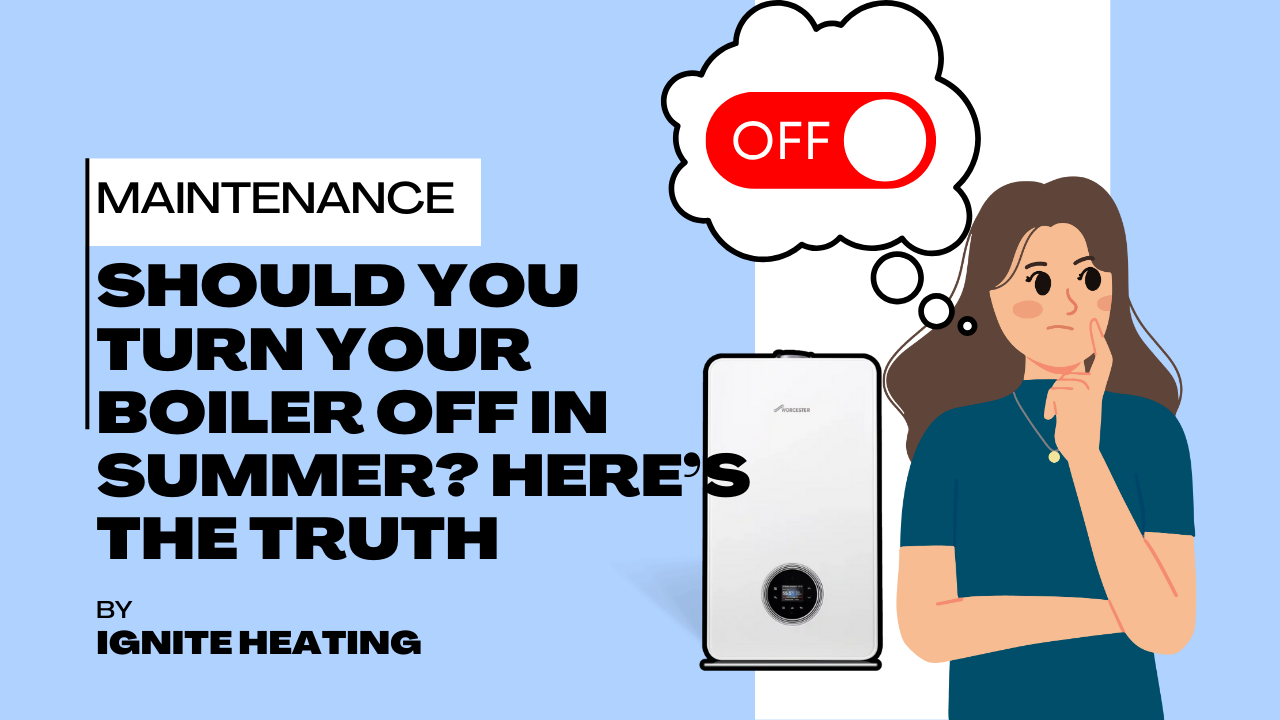
Should You Turn Your Boiler Off in Summer? Here’s the Truth.
Search Should You Turn Your Boiler Off in Summer? Here’s the Truth. Summer’s here finally. The sun’s shining (most days),

Bleeding a radiator is an essential home maintenance task that ensures your heating system works efficiently. Over time, air can become trapped inside radiators, creating cold spots and reducing their ability to heat your home effectively. By bleeding the radiators, you release this trapped air, allowing hot water to circulate properly, improving heating efficiency, lowering energy bills, and reducing strain on your boiler.
Cold spots at the top while the bottom remains warm
Gurgling or bubbling noises coming from the radiator
The heating system takes longer than usual to warm up
Higher energy bills due to reduced heating efficiency
✔ Radiator key (or a flathead screwdriver for certain models)
✔ Towel or small container (to catch drips)
✔ Gloves (optional, but useful for handling warm surfaces)
✔ Boiler pressure gauge (to check system pressure after bleeding)
1. Identify Radiators That Need Bleeding
Before starting, check which radiators need bleeding:
Turn on your central heating system and let it warm up.
Feel the radiators, especially near the top—if they’re cold at the top but warm at the bottom, they likely have trapped air and need bleeding.
💡 Tip: Start with the radiator farthest from the boiler and work your way closer.
2. Turn Off the Heating
Before bleeding any radiators, you must switch off the heating system:
This prevents hot water from spraying out and scalding you.
It also allows air to settle at the top of the radiator, making bleeding more effective.
Wait for the system to cool down completely (about 30 minutes) to avoid burns.
💡 Tip: If your system is still hot, wear gloves for protection.

3. Locate the Bleed Valve
The bleed valve is a small square or slotted screw found on the top corner of the radiator (usually on one side).
Some radiators have different types of valves, so check if you need a radiator key or a flathead screwdriver.
💡 Tip: If you’re unsure, look for a small nozzle or screw on the side or top of the radiator.
4. Prepare for Bleeding
Place a towel or small container under the valve to catch any drips.
Hold the radiator key or screwdriver firmly and insert it into the bleed valve.
💡 Tip: Have another towel nearby in case water sprays out unexpectedly.
5. Bleed the Radiator
Turn the radiator key slowly counterclockwise (usually ¼ to ½ turn).
You will hear a hissing sound—this is the trapped air escaping.
Continue turning slowly until the hissing stops and water begins to leak out steadily.
As soon as you see a steady stream of water (without air bubbles), turn the key clockwise to close the valve.
💡 Tip: Avoid over-tightening the valve; just turn it snugly to prevent leaks.
6. Check Boiler Pressure
After bleeding radiators, the boiler pressure may drop, especially in pressurized systems like combi boilers.
Locate your boiler pressure gauge (usually on the front of the boiler).
Check if the pressure is within the recommended range (typically 1-2 bar).
If the pressure is too low, top it up using the boiler’s filling loop.
💡 Tip: If you’re unsure how to top up the pressure, check your boiler manual or contact a heating professional.

7. Repeat for All Radiators
Continue the process for all radiators in your home, starting from the farthest from the boiler and working your way closer.
Once finished, turn your heating back on and check if the radiators are heating evenly.
💡 Tip: If certain radiators still have cold spots after bleeding, there may be sludge buildup, and a power flush might be needed.
Bleeding radiators can cause a pressure drop.
After bleeding, check the pressure gauge and repressurize if needed using the filling loop.
Each radiator has a manual bleed valve that allows trapped air to be released.
Always check boiler pressure after bleeding.
Usually have a header tank in the loft.
Bleeding radiators won’t affect system pressure, but ensure the header tank has enough water.
Every few months or at least once a year for routine maintenance
Before winter to ensure efficient heating.
If you frequently need to top up the system or bleed radiators weekly, this could indicate:
A leak in the system
A faulty expansion vessel or pressure relief valve
A problem with the boiler or heating system
If bleeding your radiators doesn’t resolve heating issues, it may be time to consult a professional engineer for further inspection.
🔥 Pro Tip: Regular heating system maintenance, including checking pressure, power flushing, and servicing the boiler, can help prolong the life of your heating system and prevent common issues.

Search Should You Turn Your Boiler Off in Summer? Here’s the Truth. Summer’s here finally. The sun’s shining (most days),

Search Should I Upgrade My Central Heating System Before Winter? Winter in the UK can be brutal, with freezing mornings,
© 2024 Ignite Heating. All rights reserved